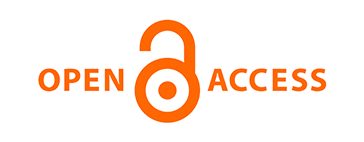Effectiveness of distance teaching for basic principles of veterinary surgery
Main Article Content
Abstract
During the confinement due to the SARS-CoV-2 (COVID-19) pandemic, the effectiveness of distance teaching of the basic principles of surgery was evaluated using the Virtual Learning Environment (ENVIA in Spanish) platform. A total of 209 fourth-year Veterinary Medicine students participated, and instruction was carried out asynchronously through forums, readings, and podcasts. Synchronous sessions were also held via video conferencing. To evaluate knowledge acquisition, a questionnaire was applied at the beginning of the course (week 1) and at the end (week 10) using the Google™ Forms platform. Students participated voluntarily and only their institutional email address was collected to link the initial and final questionnaires. The questionnaire questions covered different areas of knowledge: anesthesia (10 %), asepsis (20 %), hemostasis (10 %), delicate tissue handling (20 %), and suturing (40 %). In the initial questionnaire, the average score was 5 out of 10, while in the final, 8 out of 10. Using the Wilcoxon signed rank test, a significant difference (P < 0.0001) was found between the initial and final scores. The need to reinforce knowledge in the delicate handling of tissues and sutures was identified. These results indicate that this distance teaching model has the potential to improve the effectiveness of students' self-learning in the basic principles of surgery.
Article Details
References
Casero MO, Sánchez MM. Cambio de modalidad presencial a virtual durante el confinamiento por Covid-19: percepciones del alumnado universitario. Revista Iberoamericana de Educación a Distancia. 2022;25(1):243–260. doi: 10.5944/ried.25.1.30623.
Tseng J. Learning theories and principles in surgical education and technical learning. Journal of Surgical Oncology. 2020;122(1):11–14. doi: 10.1002/jso.25936.
Dickinson KJ, Gronseth SL. Application of Universal Design for Learning (UDL) principles to surgical education during the COVID-19 pandemic. Journal of Surgical Education. 2020 77(5):1008–1012. doi: 10.1016/j.jsurg.2020.06.005.
Jawaid M, Baig L, Aly SM. Comparison of OSCE scores of surgical clinical education after face-to-face vs. blended learning methods among undergraduate medical students. Journal of the Pakistan Medical Association. 2021;71(6):1535–1539. doi: 10.47391/JPMA.571.
Decloedt A, Franco D, Martlé V, Baert A, Verwulgen A, Valcke M. Development of surgical competence in Veterinary students using a flipped classroom approach. Journal of Veterinary Medical Education. 2021;48(3):281–288. doi: 10.3138/jvme.2019-0060.
Hammer Ø, Harper DAT, Ryan PD. PAST:Paleontological Statistics software package for education and data analysis. Palaeontologia Electronica. 2001;4(1):1–9.
Hew KF, Lo CK. Flipped classroom improves student learning in health professions education: a meta-analysis. BMC Medical Education. 2018;18:38. doi: 10.1186/s12909-018-1144-z.
Schmitz SM, Schipper S, Lemos M, Alizai PH, Kokott E, Brozat JF, Neumann UP, Ulmer TF. Development of a tailor‐made surgical online learning platform, ensuring surgical education in times of the COVID19 pandemic. BMC Surgery. 2021;21(1):196. doi: 10.1186/s12893-021-01203-5.
Chick RC, Adams AM, Peace KM, Kemp-Bohan PM, Schwantes IR, Clifton GT, et al. Using the flipped classroom model in surgical education: efficacy and trainee perception. Journal of Surgical Education. 2021;78(6):1803–1807. doi: 10.1016/j.jsurg.2021.05.008.
McGann KC, Melnyk R, Saba P, Joseph J, Glocker RJ, Ghazi A. Implementation of an e-learning academic elective for hands-on basic surgical skills to supplement medical school surgical education. Journal of Surgical Education. 2021;78(4):1164–1174. doi: 10.1016/j.jsurg.2020.11.014.
Souza GV, Hespanha ACV, Paz BF, Sá MAR, Carneiro RK, Guaita SAM, Magalhães TV, Minto BW, Dias LGGG. Impact of the internet on veterinary surgery. Veterinary and Animal Science. 2021;11:100161. doi: 10.1016/j.vas.2020.100161.
License

Veterinaria México OA by Facultad de Medicina Veterinaria y Zootecnia - Universidad Nacional Autónoma de México is licensed under a Creative Commons Attribution 4.0 International Licence.
Based on a work at http://www.revistas.unam.mx
- All articles in Veterinaria México OA re published under the Creative Commons Attribution 4.0 Unported (CC-BY 4.0). With this license, authors retain copyright but allow any user to share, copy, distribute, transmit, adapt and make commercial use of the work, without needing to provide additional permission as long as appropriate attribution is made to the original author or source.
- By using this license, all Veterinaria México OAarticles meet or exceed all funder and institutional requirements for being considered Open Access.
- Authors cannot use copyrighted material within their article unless that material has also been made available under a similarly liberal license.



